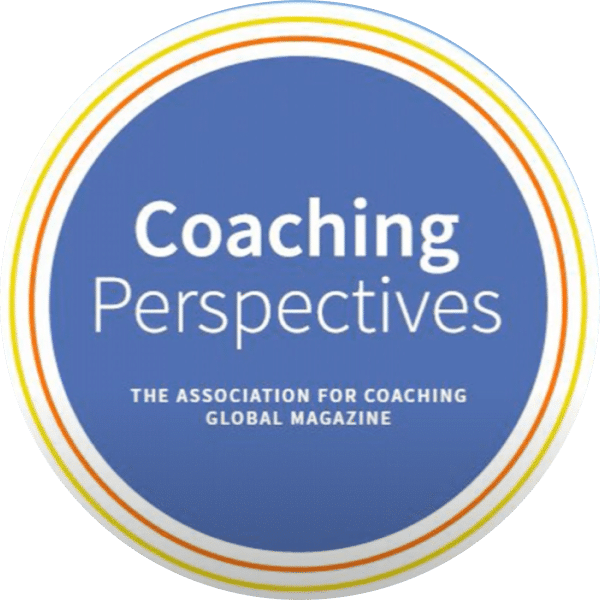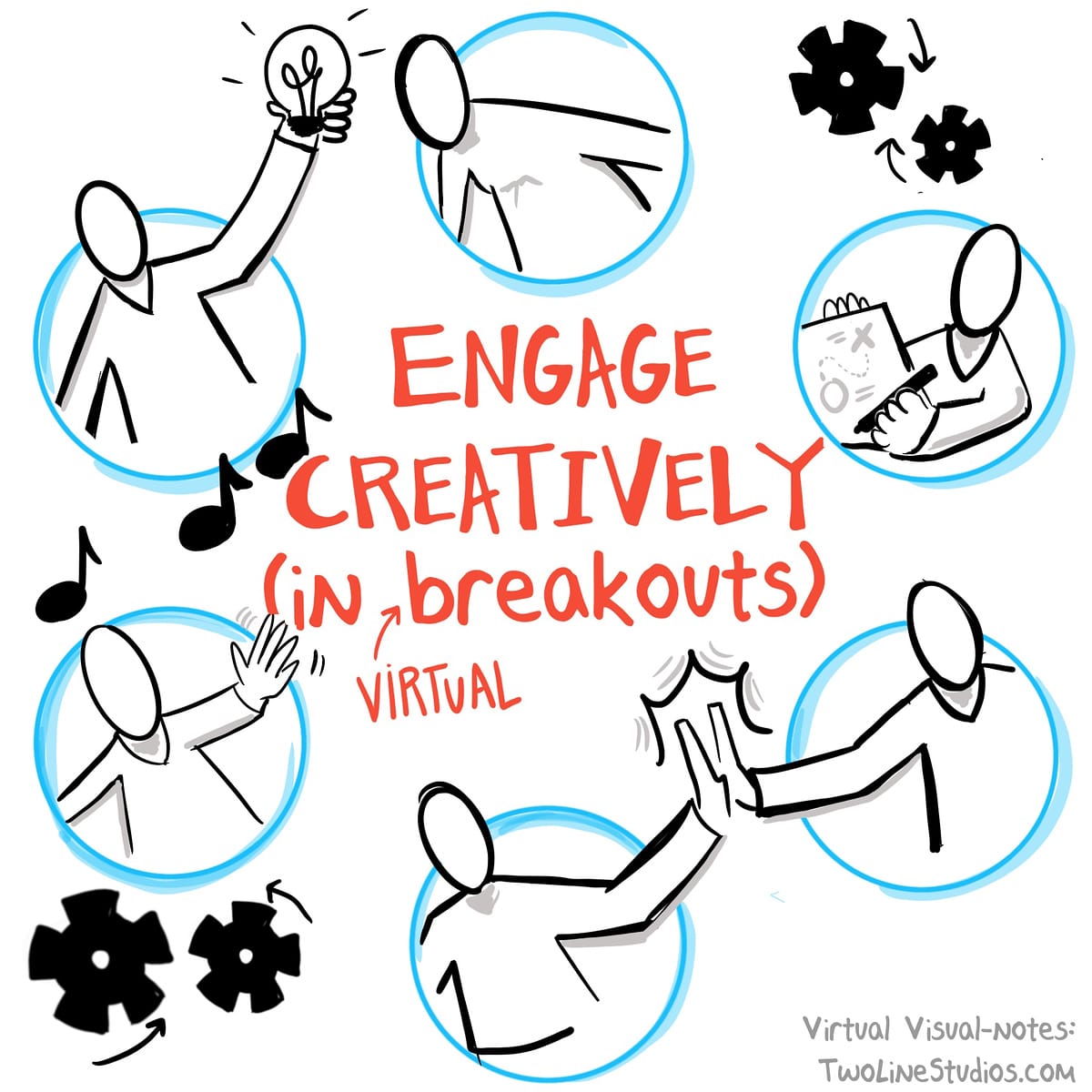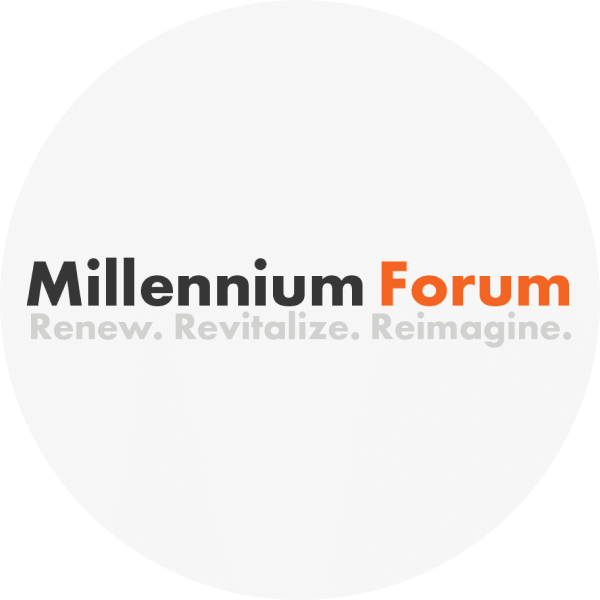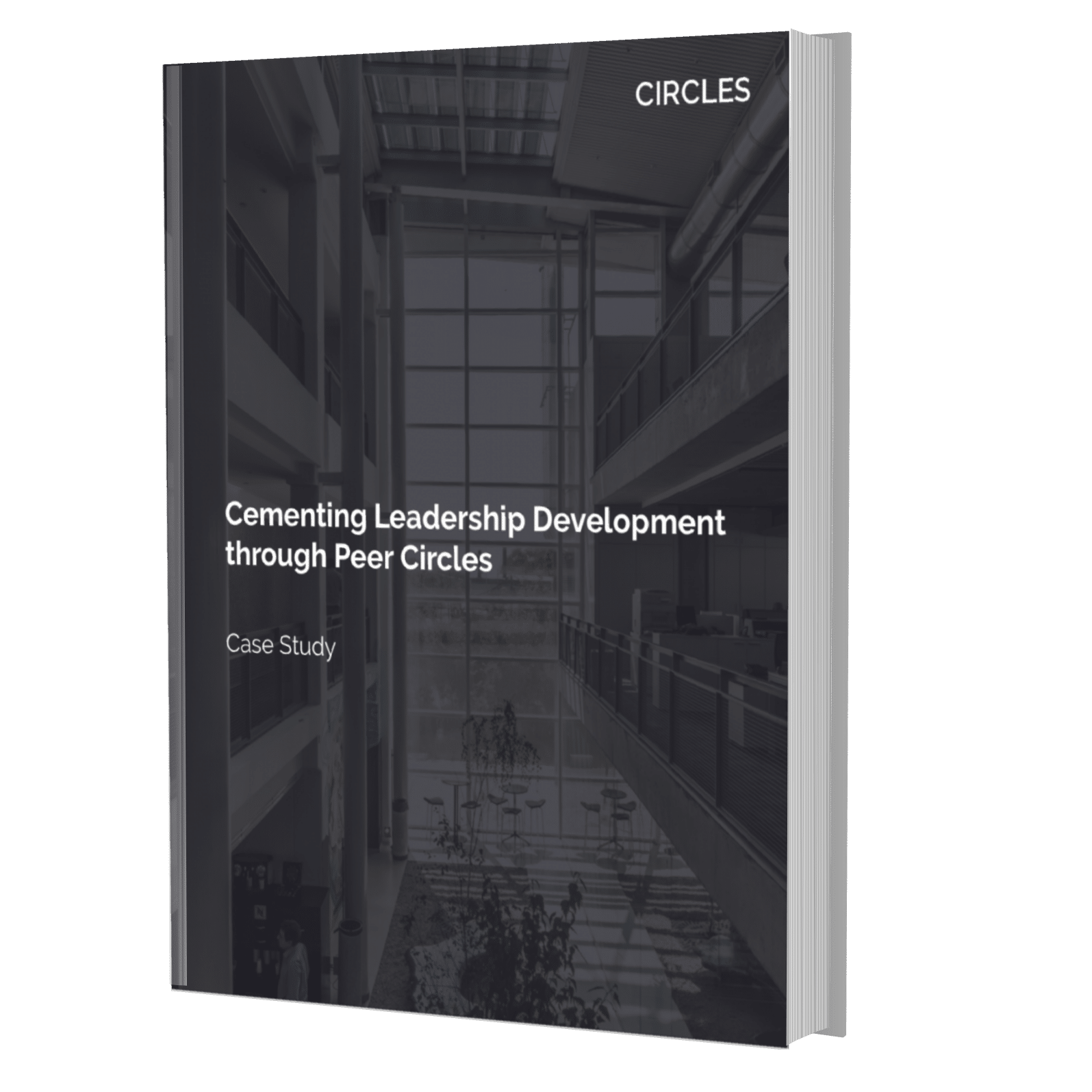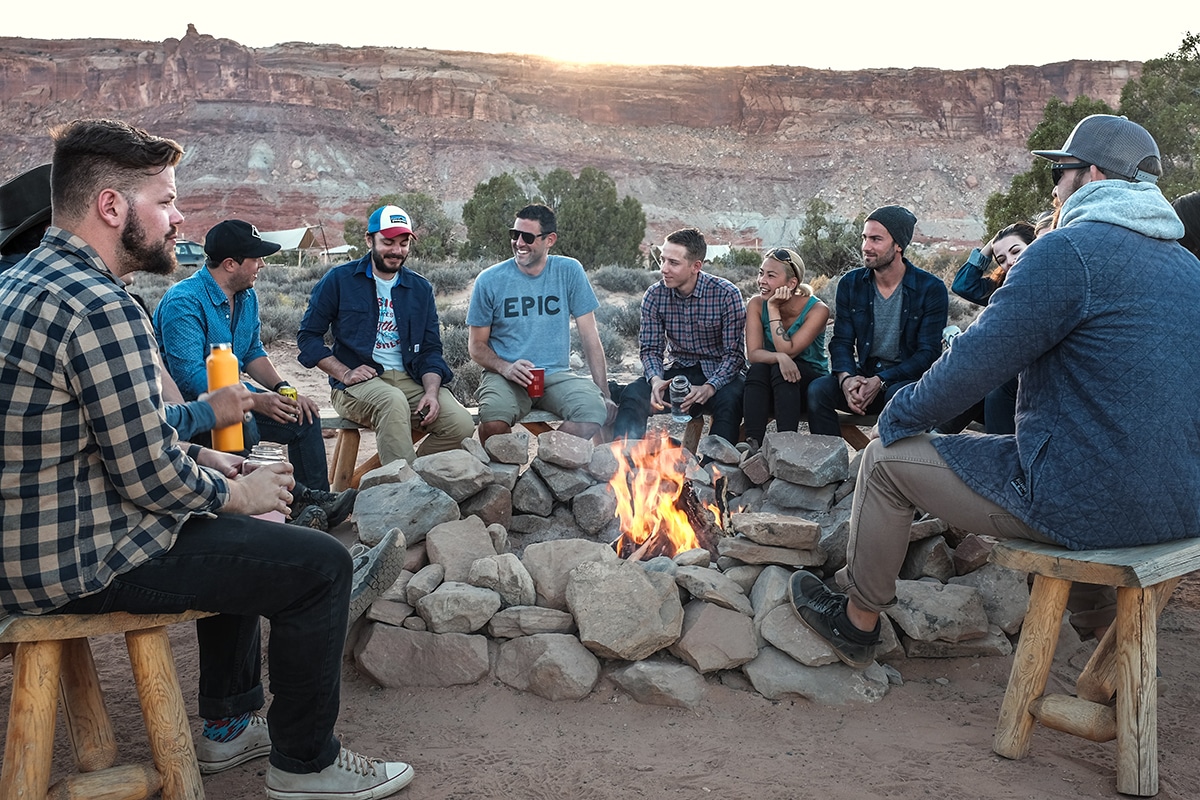Leo Bottary and Randy Cantrell talk to our CEO Dan Hoffman on their podcast, Peernovation.
Author: Circles Team
Leader as coach with Dan Hoffman
Coaching Perspectives
Sue Stockdale talks to Dan Hoffman, CEO & Founder of Circl.es. They discuss different ways that leaders can empower and coach their people and the benefits of using this type of approach.
Breaking Out

Can an online learning event be as engaging as a live one, or even more engaging? Online learning is notorious for distracted multitaskers and high drop out rates.
The secret, according to experts, is breakout groups. I’d point you to
How do you provide consistently high-quality breakout sessions? What’s the best way to structure them to stay on point? How do you ensure they’re facilitated well without professional facilitators in each room? How do you keep tabs on progress when you can’t walk around a room and visit tables?
There are challenges, but virtual breakouts offer at least four big opportunities:
Deeper Learning. Doesn’t learning happen best in small groups? The practice of learning in “Circles, Not Rows” has been our inspiration for years. In circles, people open up, reveal their real challenges and let in new ideas. Most adults learn better when having a dialogue about a current need. When sharing experiences, they learn better and the effects last longer. This is why Circle-style learning is so beloved by members of
Valuable Relationships. One of the worst aspects of moving online is that you lose the hallway, elevator, lunch or bar conversations where relationships are built. But with proper structure, the participants of a small group can connect even more quickly and meaningfully than when they make table-talk. This leads to meaningful relationships. If you keep the groups together, they form lasting bonds, sharing networks and helping each other outside the training world. As our friend Andy Billings from Electronic Arts quipped, “We spend time choosing the best presents (content) but participants just want to play with the boxes (relationships).”
Sustained Learning. What motivates participants to continue to practice learnings over time? Teams. People will show up for each other all day long before helping themselves. The Stanford research cited above shows it (16x more likely to complete a course than alone!), as does our experience. And all-of-a-sudden, the learning isn’t building-constrained. Go from a huge room of people meeting once, to small, intense groups meeting over time. Reinvest the saved travel time. Take advantage of peer accountability to drive sustained attention to a topic, and to support follow-through, which we know is required for behavior to change. If you do a good job framing the small group, and creating a dynamic of helping each other, they will stay together.
Teaming Skills. Take advantage of the team “dojo” to teach teaming skills in a safe place. Give participants turns at facilitating as part of the learning experience, and provide feedback to facilitators. Show how good meeting structure works. People can experience the power of psychological safety and vulnerability, and how to create it. Participants experience the effectiveness of team accountability, and how inclusion puts a plethora of diverse ideas on the table. Another one of our sayings: if you learn in teams, you’ll learn to lead teams that learn. Learning programs can play a crucial role in organizations struggling to improve collaboration by making team-based learning central to their approach.
The traditional “classroom” mode of presenting content to rows of individuals is a hard habit to break. Even our video conference tools are built more for presentations than conversations – one person is big by default with the others off screen, able to hide. And the closeness of Circles can produce uncomfortable conversations that some resist. Yet Learning & Development (L&D) professionals are no strangers to making people a little uncomfortable, for their own good, yes?
We believe that human connection is the magic ingredient in developing workers and leaders. Here’s how to put human connection front and center, and create an awesome event:
- Small groups
- Structured conversations
- Facilitation
- Intentional setting
Small Groups. Having people experience the entire learning journey in circles is the best way to translate live rooms to online rooms.
- Form Circles of 4-9 people before or at the start. Be deliberate about Circle creation. Turn the time saved by travel into a brief meeting to
- Restructure the session to go to breakouts 2-3 times while together. Have teams report out in between.
- Have the Circle continue. Setting up 2-5 short sessions after the workshop will keep attention on topic and focus on its real-life applications, multiplying your returns. Once the connection is built, the gravitational pull of helping each other will keep the Circle coming back to attend these sessions.
(We see over 80% attendance in our corporate Circle programs, even after 6 sessions). - Regroup. Why not gather again in 90 days, for an hour, and report out? What’s a learning journey without a final exam or performance? It’ll keep focus and give a real sense of closure.
Structured Conversations. It isn’t enough to let the small group just “talk.” Simple structures multiply the productivity of the group. We use the term “agenda” – but not as in a list of things to talk about, as in guidelines for how to run the conversation. For example:
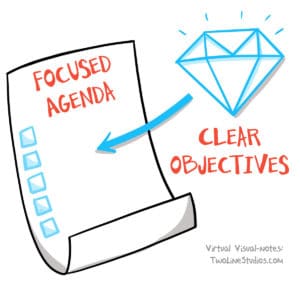
- Advance-plan questions or prompts for discussion.
- Equal talk time. Use facilitation tricks like random order and a timer.
- Reflection. 60 seconds to think after a question feels weird at first, but shortens and deepens responses, allowing everyone to be present to hear each other.
- Meeting openings. Use a prompt to prime the topic and engage emotions, right away.
- Meeting close. Make sure to integrate the discussion into action items, or learnings that you can report out.
There are many other structures that you can use when creating your agenda. A Circle fosters inclusive conversations, psychological safety, and peer accountability. The trick is to take the cognitive load off the newly formed group by providing them one clear choice. Over time, these structures are internalized and the conversation gets more organic.

Facilitation. Wouldn’t it be powerful to have a facilitator in every breakout? Having a clear and thoughtful structure makes it possible for a motivated amateur to facilitate. One way to motivate them is to make facilitation part of the learning journey itself – this is a skill most professionals value.
I don’t want to undersell the value of experienced, skilled facilitation (as an exceptional example and shout-out, check out
“Offsite” Setting. L&D leaders go to great pains to locate live learning sessions in appropriate settings. It boosts learning when you take people out of their day-to-day mindset, fast. Isn’t it even more important to do that online? Think beyond the squares: use music, images, and strong openings to set a mood of openness and wonder, conducive to learning. Tech chaos can have the opposite effect.

And now the commercial – Circles is a gang of people with a process and platform for engaging, small group learning. We make it easy to design sessions, form small groups and measure how they do. We provide a purposeful setting, scalability, and professional service, powered by our technology. We can work with any major video conference provider for large sessions, and enhance the experience with Breakout Circles™️ that keep going.
Case Study Results: Millennium Forum
Do Circles work?
Hard data is hard to get. And then there’s the question: What outcomes are we looking for?
We’re proud of our partner, Millennium Forum. They run an amazing Circles program for K-12 teachers. Their research partners and team have helped them design ways to measure and learn from outcomes.
First, some context…
In general, we talk about three categories of outcomes:
• Educational. Circles make it easier to sustain and apply learning, extending programs like manager training.
• Social. Participants get close. They help and support each other in ways that transcend any particular topics.
• Cultural. A circles experience shifts you to be more inclusive, vulnerable, and accountable. Diversity becomes a strength.
Each Circles program and partner emphasizes different outcomes. Millennium’s “Theory of Change” focuses on the second and third categories. By taking care of each other, educators will take better care of their classrooms.
Their latest mid-year results show real success:
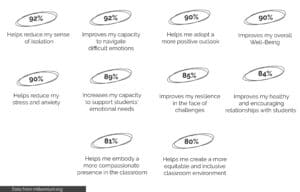
What about you?
Do you suspect similar outcomes from your Circles programs, only haven’t measured them? Are these high scores for helping teachers help students analogous to helping managers help employees?
Case Study: Adding Depth of Communication in a Fast-Paced Environment through Peer Learning

Managers at a growing national company operated within a fast-paced environment, where intense workflows often limited interaction opportunities. The company sought to cultivate a sense of unity among its managerial workforce, and to increase connectedness with the company culture and vision.
After careful consideration, Circles peer learning emerged as the best option to achieve the following objectives:
- Building relationships
– unite diverse department managers through engaging, in-depth discussions. - Conscientious leadership
– create high-performing leaders that drive company culture and values. - Individual growth
– promote an environment of continued learning and self-improvement.
Through Circles peer learning, participants deepened connections through meaningful conversations involving vulnerability, leadership principles and the power of story. A balanced culture of a unified collective and individual growth emerged through the Circles experience.
Circles supported facilitators to create a psychologically safe and inclusive space in which every member felt visible and valued. The experience was carried forward beyond the structure of Circles peer learning, and was developed as a company-wide practice focused on meaningful engagement.
Access the complete case study
Case Study: Cementing Leadership Development through Peer Learning
A world-leading food processing and packaging company runs an annual leadership development program for high-potential employees. The four-month international program aims to address individual leadership challenges to help participants transition into executive roles within five years.

After three iterations of the program, the company decided to try a complementary approach; one that would continue to keep participants engaged after the program, encourage ongoing networking with their peers and inspire them to continue the sessions themselves after the four month program. After some analysis, it became clear that peer learning circles might meet these objectives.
The goals of the circles were:
- Engagement
– increase engagement beyond the leadership development program. - Relationships
– sustain meaningful relationships with peers for improved team performance. - Self-direction
– encourage self-directed sessions for continued learning and support.
With the peer learning circles, participants were encouraged to share both organizational and personal challenges – adding a new depth to the sessions. Building upon existing trust between the participants formed during the initial program, these sessions created a safe space for open and honest discussion, gently addressing specific challenges, and strengthening the team as a whole.
As a result, not only did participants deepen connections with their peers and build a trusted support system, they also understood the power of peer circles and committed to continuing the process beyond the program.
Download the complete case study
It’s Never Been Easier To Join A Study Group
Study Groups Can Change Lives, Fast. – Daralee Barbera, GAMA International
In the lead up to LAMP 2018, nearly twenty leaders from across the financial services industry went through a four part training to become experts in online coaching. The group included names like Bob Bacigalupi, Thomasina Skipper, Sina Azari, and Lisa Kelenic. The training was all part of a new program called GAMA Circles which takes the power of study groups and adds expert facilitation, training, and technology to make it easier than ever for GAMA members to develop, practice and apply new leadership skills.
Study groups have long been one of the most effective tools for leadership development in the GAMA community. They are confidential spaces where leaders can get support on the most pressing issues facing their business. As Bob Savage of Savage & Associates has said,
“If I had any great ideas during the time I ran my operation, eighty-five percent of them came from my study groups. Any time you get with true leaders, the excitement in the room is so great. You leave the study group with more ideas than you can implement and a new belief in the religion of the business.”
Study groups have a phenomenal impact on their members’ personal and professional growth. Some of the benefits include:
- Professional development
- Field management support
- A personal Board of Directors
- Personal development
- Motivation and support
- Industry big picture
While Study Groups have traditionally occurred in person, once or twice a year, the GAMA Circles program utilizes technology to allow participants to get the benefits from study groups on a monthly basis. Additionally, the inclusion of facilitators and coaches will speed up the effectiveness of each group and ensure each participant receives the maximum impact of the opportunity. If you are interested in joining a GAMA Circle, you can learn more here. The program will be kicking off this summer and will include ~100 of the top producers in the industry.
Don’t miss this unique chance!
Is Your Team Having Conversations, or Sitting Through Presentations?
 They may not have the wow factor of Guy Kawasaki evangelizing the heck out of Apple products on stage, but why should we be having conversations instead of giving presentations?
They may not have the wow factor of Guy Kawasaki evangelizing the heck out of Apple products on stage, but why should we be having conversations instead of giving presentations?
The Presentation Problem
We’ve all sat through dozens, if not hundreds, of presentations. That’s all well and good, but are we really getting the most out of a team if one person -the presenter- is treated like the fountain of all knowledge?
It’s easier to rally around one person’s ideas, so business leaders have traditionally been put on a pedestal. Brilliant public speakers too. Think a Guy Kawasaki, or Tony Robbins. The focus is on being magnetic, having a stage presence and, more often than not, selling a product or persona.
There is, of course, a time and a place for this, but if we want to learn from the work, and life, experience of others, there are better methods that have been proven to be more effective.
If we’re emulating people trying to have huge reach and mass appeal, like the Kawasaki’s and Robbins’ of the world, when our objective is communicating in a meeting with a small group, we may be missing the mark.
Focus On The Message
Of course it’s understandable that we want to show our best selves when we give a presentation. However, chasing that wow factor in our presentations can actually have the opposite effect, completely derailing their effectiveness and leaving us back at square one.
John Coleman, writing for HBR, has revealed the side effects of having “that tendency [in presentations] to want to save key findings for the last moment and then reveal them, expecting a satisfying moment of awe”. This is something he characterized as “the great unveil”. Withholding information to increase that wow factor, Coleman says, would actually lead to “one sided expositions” and “anemic conversations.”
Worst of all though, as Coleman puts it, they would “miss problems, or solutions that had already been tried and failed”, and if someone pointed these out to the presenters “in the middle of [the] presentation, [they’d] end up distracted and confused.” By focusing too much on giving a killer presentation they completely failed to get gain any value from the input of others. Their message inevitably fell on deaf ears.
But how do we make the message our main focus?
A “punchline first” form of communication, as Coleman calls it, can take us far. That means starting the presentation with an executive summary of key conclusions. Your counterparts can study them and keep them in mind throughout the presentation meaning everyone’s efforts will be aimed at testing these conclusions and finding solutions. No energy will be spent on taking up new ideas. Additionally, you’ll be opening the floor and making the most of group intelligence, which is, unsurprisingly, much more reliable than putting all of the burden on the presenter.
Have A Structured Conversation
“Inevitably, when I engage well with an audience, it feels much more like a two-way conversation. When I fail to engage, I realize I’ve fallen back into the presentation trap.”
George Bradt nailed it on the head in his Forbes article. There’s a way we can really drive home this idea of conversations over presentations and it doesn’t mean throwing your q cards out the window. Having a purposefully structured conversation can get everyone engaged on the topic and create an environment that is inclusive and collaborative.
You can do this in a number of ways. Firstly, disperse responsibility for key parts of the presentation. A good way to start is by assigning roles such as timekeeper and note taker, and most importantly, having a facilitator to run things. Doing this will start proceedings on the right foot and lead to an inclusive discussion instead of a static presentation.
We can also take Coleman’s “punchline first” approach even further by having required reading before meetings. Once again this will get everyone involved,
If we really want to get to the route of an issue, we also have to get rid of the notion that we somehow “own” the solution.
John Coleman’s team discovered this through trial and error:
“When we created a perfect solution in isolation and made it “ours” to present, we ignored the fact that each individual needed to arrive at the conclusions independently to really understand it, to believe in it, and to be willing to work hard to execute it.”
Conversations allow us to feel invested in each other’s stories instead of feeling like we’re being talked at or spoon-fed advice. Our meetings, and workshops, at Circles encourage conversation over presentation and storytelling over advice giving.
This reverses the focus. Kawasaki and Robbins are geniuses at having a mass reach and wide appeal, but depending on our situation, trying to copy that style is likely to have our focus in the wrong place. While they reach a huge amount of people, turning those presentations into conversations will let you be reached by a huge amount of people.
Seeking those different perspectives opens you up to a constant source of learning opportunities.
Why a Team Retreat Brings You More Than Just “Philosophical Wank”
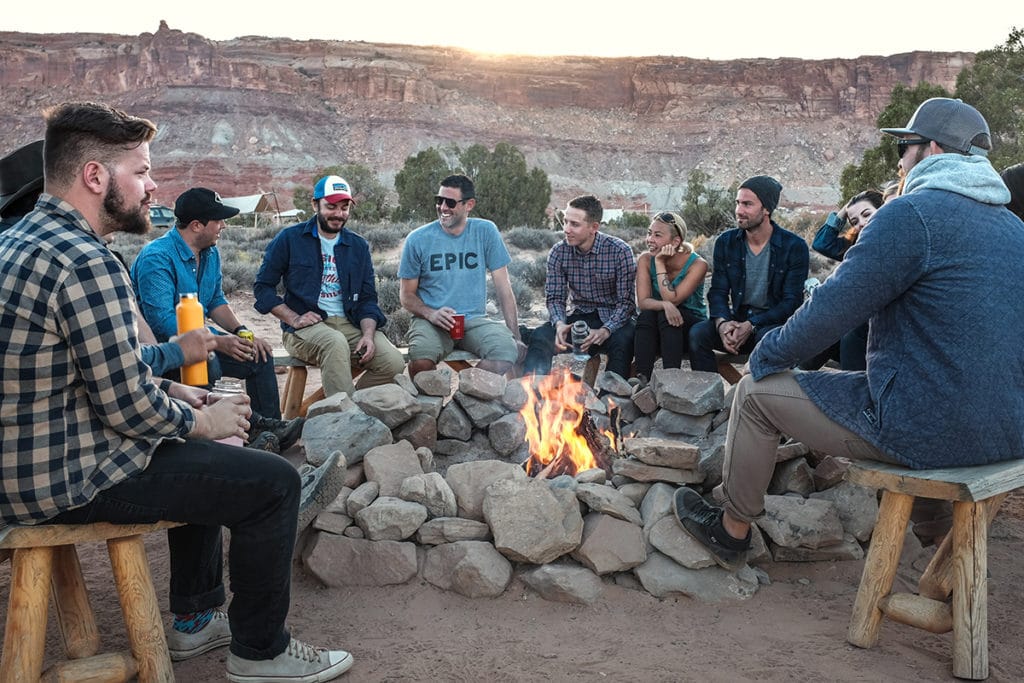
Wait. What? Did he just say philosophical wank? Yes, exactly.
One of my colleagues, who we shall call Franko for now, came up with the term during one of our meetings. His decidedly British remark can be translated in any number of other ways; philosophical jargon, nonsense, patois, you name it. Our last team offsite was so fruitful, Franko had said, and we had to make sure our next one was going to be even better. The key was not to get sidetracked by the nonsense.
At Circles we work as a distributed team. It makes us understand the value of spending time together, and the fact that face time is essential for us to have a productive and successful team dynamic.
But what are the challenges virtual teams have to deal with? And how can face-to-face get-togethers help a team overcome those challenges? Here, I’ll discuss these questions, as well as offering up some of my own experience working as part of a virtual team at Circles.
1 – The challenges of working as a distributed/virtual team
The dynamics within a distributed or remote team are very surprisingly different when compared to a team that meets in an office on a daily basis. It’s hard to imagine until you’ve made the jump yourself. While having a remote team has many advantages, you will also be challenged to overcome the lack of proper communication that leads to decision making in a traditional office setting. More specifically, working around different time zones, dealing with different cultures and/or languages, and a lack of water cooler conversations are just a few more examples of things that can leave you feeling a little directionless when you first begin.
To overcome these challenges, we need to understand the importance of establishing trust and identity within a team, and solving the problems related to these factors, which are categorized as being technical and organizational (Kimble, 2011). Technical problems occur because, “relying solely on online communication tends to inhibit participation and the creation of trust and the sense of mutual responsibility that characterizes teamwork”. These problems can be solved by finding the right tools to support the needs of a virtual team. On the flipside, organizational problems are “fundamentally rooted in the ways in which people work and are managed”. These problems are solved by finding the right organizational fit or employee characteristics, culture and leadership.
As many authors have already discussed the solutions for overcoming these problems in detail, I’m not going to discuss all of them here. Instead, I will focus on one solution, regular face-to-face meetings for virtual teams, and will illustrate this using what we do at Circles as an example.
2 – The advantages of meeting face to face
So let’s assume you are part of a virtual team. You are using the right tools to facilitate proper communication, you have clear values and norms, great leadership, a good team atmosphere.. Basically a well functioning team without any problems. In this scenario, is it still necessary to meet face to face with your colleagues every once in awhile? YES.
Here are some reasons from a trusted source..
Dr. Joseph Mercola (2005) has looked extensively at the underlying reasons why we should always have face-to-face meetings:
In-person meetings allow your brain to synchronize with others
Real life interaction triggers the inclusion of “multimodal sensory information”. This includes nonverbal cues (facial expressions, gestures, etc.) and ‘turn taking behaviors’, which play a large role in our social interactions and reflect the level at which a person is involved in any given interaction. It was found that only during face-to-face meetings, are these “neural synchronizations” established. In other words, a great part of the way we communicate is nonverbal, and though conferencing tech is coming on in leaps and bounds, video calls are still somewhat limited in transmitting the nuances of this type of communication from one side of the globe to the other.
Source & extra reading: Neural Synchronization during Face-to-Face Communication.
Face-to-face meetings work better when creativity is needed
Various studies have found a relationship between established trust within a team, and creative output. When feeling comfortable, team members are more likely to speak up, bring forward new ideas, or think and discuss outside-of-the-box ideas they would have feared having shot down otherwise. More in-person meetings leads to more trust, which subsequently leads to more creativity.
Google give a great example, cited by Newsweek’s Geoff Colvin (link below). The search giant invite employees to have free gourmet lunches at the company’s cafeterias. By doing this, Google is encouraging its employees to meet (new) colleagues, build trust, and stimulate creativity. They even measured the optimal queue waiting time for encouraging people to interact (it’s four minutes).
Source & extra reading: The creative power of meeting eyeball to eyeball
Source & extra reading: Measuring social capital in creative teams through sociometric sensors
So, physical proximity positively impacts collaboration, communication and decision making. The two factors mentioned above ensure team members feel part of their team, that they will help new hires ‘understand’ and clarify their position in the team. All of this boosts team morale and productivity while helping generate new ideas from within the team.
It’s great to know research is proving we need to keep seeing each other’s faces. But how often should we do so?
3 – Deciding on the right amount of face-to-face time
We’ve had a look at why it’s important to have face-to-face meetings when working in a virtual team. But what determines the right amount of f2f meetings? And what other team or company characteristics influence the necessity or frequency of face-to-face meetings?
Unfortunately there is not much research yet on this topic, so answering these questions with hard data is difficult. However, companies by their very nature are centers for diverse working dynamics, personality types and cultures. Different teams, as well as the people within these teams, will have different capacities for adapting to remote work. So, while some virtual teams will need no, or very little, face-to-face time, other teams will need to meet on a more frequent basis. There’s no real one size fits all solution. What we are dealing with is a wide-ranging spectrum. A team’s position on this spectrum can be determined by several factors, which I have identified as the following:
Stage of the company
When you are in the process of setting up a new venture it is important to build rapport with your colleagues, create a common goal, and set a clear strategy. So a team is likely to want to start off meeting in person more frequently at the beginning, before gradually decreasing this frequency over time.
Performance of the company & Clarity of tasks/roles: stability
When business is going well, when employees are clear about their roles and responsibilities or when it’s possible to power through until the next big milestone (strategy update, acquisition, new market entry, etc.), organizing face-to-face meetings frequently might be unnecessary. However, if some employees are unclear about their role, or the chosen strategic path does not turn out to be as fruitful as was anticipated, a face-to-face meeting may be needed asap.
Interdependence
Additionally, the degree to which you depend on the work of your colleagues will have an impact on the importance and frequency of meeting face to face. Whereas some teams work in silos, and merely give weekly (or even monthly) updates about their work, other teams work closely together and collaborate on a frequent basis. When the output of a team’s work is not just a sum of its parts but a dynamic whole that involves learning and development as part of the process, having face-to-face meetings more often is even more important.
Company culture & leadership style
As mentioned before, meeting face-to-face can enhance the establishment of trust among team members. As trust can be seen as an indirect outcome of company culture (hierarchical, flat, teal, etc.) and leadership style (strict, loose, etc.), which are often mediated by factors such as psychological safety, teams that lack a mutual sense of trust will clearly be in more need of frequent face-to-face meetings.
Location
Most obviously, location will also influence the frequency with which a team is able to meet in person. The amount of team members working from different locations as well as the distance that needs to be covered will have an impact.
Finally, it’s important to mention that most factors above are related to one another. For example, for a company that just started, the relative costs of getting the team together will be higher, so the location will play a bigger role in determining the frequency of face-to-face team meetings.
4 – How we do face-to-face time at Circles
Face-to-face at Circles
There’s a reason all of this is important to me, and it’s that I work as part of a virtual team. I used to be based in Barcelona and currently live in Santiago, Chile while most of our team at Circles is based in New York. So we’re part of this learning process. Face-to-face meetings have been a crucial part of my personal journey within the company.
I joined Circles a bit less than a year ago and was told from the beginning it was no ‘ordinary’ company. “We are a start up following the teal ideology and we value proactivity and openness”, René, one of the founding team members, told me during the interview process.
Fair enough, I thought. I knew a bit about Teal, the ideas intrigued me, and after I had a call with Dan, the owner of Circles, I decided to go for it.
Coming from a big multinational into a start up with a team of 7 was quite a change.
Although I started to understand working culture better day by day, I think it took me at least a month to feel comfortable in my role. By comfortable I mean that I started to realize what was expected of me and began delivering on that expectation by fully understanding how I was supposed to go about doing this.
Still, my biggest challenge was finding my voice within the team. I think I experienced the typical struggles of a new hire in a remote team. You don’t ‘really know’ your colleagues, and they don’t ‘really know’ you, simply because you have never met in person. In a more traditional work setup the first step is meeting your colleagues, so that situation can certainly be isolating.
This all changed after my first team offsite, which was about 3 months after I started working at Circles. It was the first time I got to understand what the importance of face-to-face time is, and what it can do to team dynamics. It felt like it was the first time I was able to properly introduce myself, and this introduction was needed to gain the trust of my colleagues. This introduction did not only include a simple, “Hi, what’s up? How are you?”, but a weekend of fun and 2 days of hard work where they got to meet the real me.
After the offsite I felt more of a part of the team, I interacted more with my colleagues, was asked more often for input and could more easily ask someone else for a favor. I guess the neural synchronization (helped by a few Gin and Tonics) did its job…
The spectrum at Circles
All in all I think we currently found the right spot on that “face-to-face spectrum”. We’re a young company, so we’re still prone to geeking out on that “philosophical wank”. We’re still asking the big questions, but what we’ve really realized is that we need our team offsites and face-to-face time to help us make the important strategic decisions. The more we know each other, the better we work together. Ultimately, it’s essential to balance the benefit of increased work flexibility with a structure based around seeing each other on a regular basis.
Even though distance between team members makes it harder to get the entire team together often, Dan’s wish is to have an off site 6 times a year. Having that preset rhythm allows us to work in sprints wherein we all have a clearly defined set of tasks that need to be finished before the next offsite. In between off sites, we try to overcome the challenges of a virtual team like many others: communication tools, office hours, organizational norms… yep, we’ve been through it all.
With each offsite Circles is getting more effective (engaging less in philosophical wank and more in discussing actionable ideas). The next Circles offsite will be in a week. Time for some serious work, eyeballing & karaoke.
8 Signs You Just Had A Great Meeting
 What feeling do meetings transmit in your workplace? Sadly, when we ask a colleague how the day’s meeting went, we’re so often met with an apprehensive shrug or a sigh. Meetings just .. happen, right?
What feeling do meetings transmit in your workplace? Sadly, when we ask a colleague how the day’s meeting went, we’re so often met with an apprehensive shrug or a sigh. Meetings just .. happen, right?
While we hope -for the sake of your sanity- you and your colleagues aren’t quite so jaded, the truth is that so many organizations are lacking an actual language for discussing how their meetings went. It’s hard to be enthusiastic about something we aren’t used to measuring in any discernible way.
According to a recent study carried out in the UK, we spend on average, a mind boggling 4 years of accumulated time throughout our careers in meetings. So it’s time we learn to communicate effectively what went well and what can be improved.
Here are a few tips to help you assess if you just had a great meeting rather than one that just … happened.
Were there clear outcomes?
It’s surprising how many times meetings end and people walk out unclear on what was actually achieved by said meeting. This kind of outcome is no outcome at all, and it can lead to meeting-dread within your organization.
Patrick Lencioni takes on the air of a Surgeon General describing a terrible disease when he writes about the effects of bad meetings in his book, Death by Meeting. They “generate real human suffering in the form of anger, lethargy, and cynicism”, he argues.
The way to ensure clear outcomes is by having a purpose for the meeting, facilitating it effectively and making sure there is a clearly set out agenda, all things we delve into below.
Did everyone get a word in…
As lead guide at Circles, Jonathan Hefter puts it, “you know you’ve had a good meeting when no one’s held back.” However, it can be tricky knowing when this is the case. Are cultural norms holding someone back? Maybe a Brit’s being too polite, an American too loud? Stereotypes aside, it’s difficult to know if everyone has said everything they wanted to.
While we can’t speak for someone in a meeting, what we can do is create a comfortable environment. See someone in the corner being particularly quiet? Could be because they’re using that time to think. They may have a brilliant idea, so ask them! In Circles online meetings we use a timer to allow everyone their turn to speak. Participants tell us it has really made them up their game when they know they’re going to be called on.
Without destroying momentum?
Everyone getting their say is great, but moderation is the key. There are important questions for the facilitator to think about at any given time. Why is the meeting grinding to a halt? Is it going off topic? Are people there who can’t add anything, causing them to nervously waffle for the sake of appearance (the bike-shed effect)?
Having a good facilitator is a key ingredient to a great meeting. They shouldn’t just be seen as someone who calls the shots. In fact, at times they could be there purely to facilitate, with no real stakes in the outcome of the meeting (aside from it being effective). What a facilitator needs, is the ability to step in if someone is going off topic. Also important is a deft hand at dispelling tension within a meeting, while also knowing when it’s useful to dive into head first (see below). A great meeting needs a great facilitator, someone who is a great handler of team dynamics.
Was there a healthy amount of conflict?
Many of the skills mentioned below are transferable with another profession, theatre. A movie or theatre director has to oversee a team and often deals with clashing personalities. In this vein, Patrick Lencioni says his cure for boring meetings is to allow drama to come to the fore. A facilitator should treat a meeting like they were overseeing the set of a Shakespeare adaptation. His suggestion is to replace “agendas and decorum with passion and conflict.” Doing so results in an atmosphere that compels people to get involved. It makes them feel part of a narrative that they can influence, rather than sitting there checking items off a list.
As Lencioni puts it, “the good news, [is that] there are plenty of issues at every meeting that have the potential for productive, relevant conflict.” The bad news? This style may not be for every team and can descend into chaos, much like the final act of a Shakespearean tragedy.
Was there a clear agenda?
Having an agenda doesn’t have to mean avoiding conflict. In fact, an agenda could be geared towards allowing time for airing tensions in a productive way. We use protocols to make sure meetings are carried out effectively and address important issues. Rather than just having objectives telling you what to address at any given time, protocols address the process itself giving the meeting clarity. Is something really holding part of the team back? Let’s pick it apart and really dig into the problem.
A great meeting is one where people feel safe bringing their tensions to the table. Our lead guide, Jonathan Hefter, who has facilitated his fair share of meetings, says you should “notice where the real tensions are, and welcome them.” It means you’ve created a space where people don’t feel they have to hold back. A purposeful agenda can allow a canny facilitator to do just that!
Did your meeting create other meetings?
It might sound diabolical. Coming out of a meeting to realize that, as a result of attending, you now have three more meetings on the agenda! But this is actually a sign that things went to plan. As Jonathan Hefter puts it, “don’t spend time on a money issue when it’s clearly more suited for the monthly finance meeting.”
Ian Fisher, who ran meetings as assistant editor at the New York Times for two years, used to employ a specific tactic when topics were brought up that were better suited to another meeting; he’d pretend he was a talk show host. “I called myself Regis.” He explained to Fast Company. “Say what you want, but he knew when it was time to go to the commercial.”
Is the style a good fit for your company?
Some of the advice in this article is contradictory.
“Have a tightly knit and action packed agenda.”
“No, throw your agenda out the window and magic will happen!”
The fact is that a casual peruse through your social media timelines will instantly hit you with a barrage of contradictory information and advice, it’s enough to put anyone’s head into a spin! The only answer to this is in the real world and it’s called implementation. Try out agenda’s, try out no agenda’s. What gives your team the best results?
It ended on time
Much like a blog post, a meeting shouldn’t overstay its welcome. That means it’s gone off topic and people’s attention spans are waning. See this happening and it may be best to cut things short and leave the issue at hand for the next team meeting when people are coming in refreshed… so with that, I bid you farewell!

